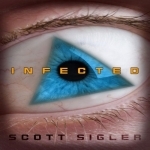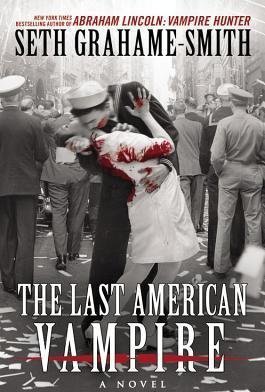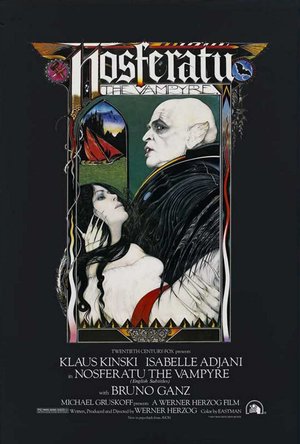Search
Annie Chanse (15 KP) rated The Last American Vampire in Books
May 25, 2018
A Rare Case of The Sequel Being Better than the First Book
I loved this book. Honestly, I'm not certain that I didn't like it even more than "Abraham Lincoln: Vampire Hunter." One of my favorite things about both of these books is that Smith writes them like history books (complete with footnotes and actual photographs of things like Teddy Roosevelt posing with an elephant he'd just killed and Jack Ruby with his gun jammed into Lee Harvey Oswald's stomach). The facts he uses in his book are so... FACTUAL! I mean, seriously, the only thing keeping a person from reading these books as absolute truth is the fact that s/he doesn't believe vampires actually exist. But if a person DID believe in vampires? Oh yes, everything in these books is absolutely plausible. I can honestly see some confused people who are on the fence about whether or not vampires are real reading this book, finishing it, slamming it down, and saying, "I KNEW IT! I -KNEW- THEY WERE REAL!" Ha. Seriously though, the realism in these books is what makes them so much fun and so wonderful.
The thing I like about this book so much -- the thing that very possibly makes me enjoy this one more than the original -- is all that cameos in the book -- Mark Twain, Howard Hughes, Arthur Conan Doyle, Bram Stoker, Henry Irving, Eliot Ness.... I mean, HELLO?! What a stellar, badass cast of cameo characters. Although, honestly, "cameo" is not the most appropriate word because some of these characters played pretty major roles in the novel. It was fantastic. Viewing Howard Hughes' eccentricities and insanities through vampire-colored glasses is simply... perfect. It doesn't seemed forced at all. Wait, after a plane crash, Howard Hughes was turned into a vampire? ... Yeah, I can see that. That makes perfect sense. And it DOES! It is such an easy transition from mentally ill billionaire to crazy vampire. Not such a stretch. And Rasputin? OH yeah. That guy was TOTALLY a vampire. :-p
Anyway. Now I'm kind of rambling. But seriously, this book was fantastic, so much fun. There wasn't a single part of this book that I didn't love.
The thing I like about this book so much -- the thing that very possibly makes me enjoy this one more than the original -- is all that cameos in the book -- Mark Twain, Howard Hughes, Arthur Conan Doyle, Bram Stoker, Henry Irving, Eliot Ness.... I mean, HELLO?! What a stellar, badass cast of cameo characters. Although, honestly, "cameo" is not the most appropriate word because some of these characters played pretty major roles in the novel. It was fantastic. Viewing Howard Hughes' eccentricities and insanities through vampire-colored glasses is simply... perfect. It doesn't seemed forced at all. Wait, after a plane crash, Howard Hughes was turned into a vampire? ... Yeah, I can see that. That makes perfect sense. And it DOES! It is such an easy transition from mentally ill billionaire to crazy vampire. Not such a stretch. And Rasputin? OH yeah. That guy was TOTALLY a vampire. :-p
Anyway. Now I'm kind of rambling. But seriously, this book was fantastic, so much fun. There wasn't a single part of this book that I didn't love.
Matthew Krueger (10051 KP) rated Nosferatu the Vampyre (1979) in Movies
Oct 28, 2020 (Updated Oct 28, 2020)
The Vampire Among Them
Nosferatu The Vampyre- is a very slow movie. Very slow, for 90% of the time nothing happens and when some does happens its only for three minutes max. I always wanted to watch the oringal, never got a chance to, hopefully soon i will. As for this remake its so-so.
The plot: Jonathan Harker is sent away to Count Dracula's castle to sell him a house in Virna, where he lives. But Count Dracula is a vampire, an undead ghoul living off men's blood. Inspired by a photograph of Lucy Harker, Jonathan's wife, Dracula moves to Virna, bringing with him death and plague... An unusually contemplative version of Dracula, in which the vampire bears the cross of not being able to get old and die.
There are two different versions of the film, one in which the actors speak English, and one in which they speak German.
Herzog's production of Nosferatu was very well received by critics and enjoyed a comfortable degree of commercial success.
The film also marks the second of five collaborations between director Herzog and actor Kinski.
While the basic story is derived from Bram Stoker's novel Dracula, director Herzog made the 1979 film primarily as an homage remake of F. W. Murnau's silent film Nosferatu (1922), which differs somewhat from Stoker's original work. The makers of the earlier film could not obtain the rights for a film adaptation of Dracula, so they changed a number of minor details and character names in an unsuccessful attempt to avoid copyright infringement on the intellectual property owned (at the time) by Stoker's widow Florence. A lawsuit was filed, resulting in an order for the destruction of all prints of the film. Some prints survived, and were restored after Florence Stoker had died and the copyright had expired.
By the 1960s and early 1970s the original silent returned to circulation, and was enjoyed by a new generation of moviegoers.
In 1979, by the very day the copyright for Dracula had entered the public domain, Herzog proceeded with his updated version of the classic German film, which could now include the original character names.
Herzog saw his film as a parable about the fragility of order in a staid, bourgeois town. "It is more than a horror film", he says. "Nosferatu is not a monster, but an ambivalent, masterful force of change. When the plague threatens, people throw their property into the streets, they discard their bourgeois trappings. A re‐evaluation
of life and its meaning takes place."
Like i said its a decent movie.
The plot: Jonathan Harker is sent away to Count Dracula's castle to sell him a house in Virna, where he lives. But Count Dracula is a vampire, an undead ghoul living off men's blood. Inspired by a photograph of Lucy Harker, Jonathan's wife, Dracula moves to Virna, bringing with him death and plague... An unusually contemplative version of Dracula, in which the vampire bears the cross of not being able to get old and die.
There are two different versions of the film, one in which the actors speak English, and one in which they speak German.
Herzog's production of Nosferatu was very well received by critics and enjoyed a comfortable degree of commercial success.
The film also marks the second of five collaborations between director Herzog and actor Kinski.
While the basic story is derived from Bram Stoker's novel Dracula, director Herzog made the 1979 film primarily as an homage remake of F. W. Murnau's silent film Nosferatu (1922), which differs somewhat from Stoker's original work. The makers of the earlier film could not obtain the rights for a film adaptation of Dracula, so they changed a number of minor details and character names in an unsuccessful attempt to avoid copyright infringement on the intellectual property owned (at the time) by Stoker's widow Florence. A lawsuit was filed, resulting in an order for the destruction of all prints of the film. Some prints survived, and were restored after Florence Stoker had died and the copyright had expired.
By the 1960s and early 1970s the original silent returned to circulation, and was enjoyed by a new generation of moviegoers.
In 1979, by the very day the copyright for Dracula had entered the public domain, Herzog proceeded with his updated version of the classic German film, which could now include the original character names.
Herzog saw his film as a parable about the fragility of order in a staid, bourgeois town. "It is more than a horror film", he says. "Nosferatu is not a monster, but an ambivalent, masterful force of change. When the plague threatens, people throw their property into the streets, they discard their bourgeois trappings. A re‐evaluation
of life and its meaning takes place."
Like i said its a decent movie.

Infected by Scott Sigler
Podcast
Across America a mysterious disease is turning ordinary people into raving, paranoid murderers who...

